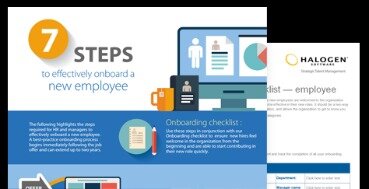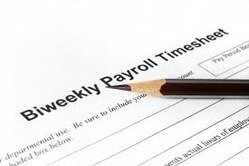
Slashing costs can help companies to make even more money from sales. The line between expenses and expenditures is subtle but important. Generally speaking, an expenditure is the total cost of a transaction, while an expense is that transaction’s offset to a company’s revenue.

An expense in accounting is the money spent, or costs incurred, by a business in their effort to generate revenues. Essentially, accounts expenses represent the cost of doing business; they are the sum of all the activities that hopefully generate a profit. Many expenses are tax deductible, or costs that can be subtracted from your overall gross income, reducing your tax liability at the end of the year.
Meaning of expense in English
Expenses are used to produce revenue (seek profit) and they are deductible on your business tax return, reducing the business’s income tax bill. To be deductible, they must be “ordinary and necessary” to the business. Budgets and historical trend analysis are expense management tools.
- Expenses can be for physical items, such as a furniture maker buying wood to make chairs.
- But it will have to keep paying the interest on the loan and recurring operating costs to keep the van generating revenue, including fuel, insurance, maintenance, tolls and the delivery driver’s salary — these are expenses.
- For instance, many companies are required to pay estimated taxes quarterly.
- While most costs of doing business can be expensed or written off against business income the year they are incurred, capital expenses must be capitalized or written off slowly over time.
- An expense is a cost that businesses incur in running their operations.
If you use a car entirely for business purposes, you can deduct the related expenses. Any expense that has a personal benefit rather than a business benefit is non-deductible. The value of inventory on hand at the beginning and the end of each tax year is used in determining the cost of goods sold (COGS), which is a large direct expense adp clients face potential tax fraud after recent breach for many companies. Essentially, if your company receives and pays an invoice, that’s an expense. The process of paying bills is a subset of the accounts payable (AP) function. Upon receiving an original invoice or purchase order, someone in the AP department reviews it to ensure all details are accurate and compliant with policies.
Gifts, Meals, and Entertainment Costs
An expense is a cost that has expired or been taken up by activities that help generate revenue. Therefore, all expenses are costs, but not all costs are expenses. Indirect costs are subtracted from gross profit to identify operating profit. Typical indirect costs include executive compensation, general expenses, depreciation, and marketing costs. To properly record — and deduct — business expenses, you need to keep documentation.

For tax purposes, expenses should be grouped into categories, such as selling, general and administrative expenses (SG&A). Misidentifying expenses can result in businesses unnecessarily missing out on deductions or incurring IRS penalties. If an outlay represents a direct cost of making or acquiring the products that generated revenue during the period rather than the day-to-day cost of doing business, it’s COGS.
Types of Expenses
Non-operating expenses are expenditures that are indirectly related to operations and the result of financing or investing activities, such as depreciation and amortization and interest payments on loans and credit cards. Under the matching principle, expenses are typically recognized in the same period in which related revenues are recognized. For example, if goods are sold in January, then both the revenues and cost of goods sold related to the sale transaction should be recorded in January.
Going paperless and buying accounting software should be one of the first steps you take when starting your business, or when you’re looking for ways to make it more efficient. Small Business Administration says the first bookkeeping step you should take when launching a company is to get business accounting software. They even list that before opening a business checking account and tracking sales. Financial management software is essential for tracking revenue and expenses, and generating financial reports, and tracking the financial health of the business.
Company
It reduces errors inherent in manual data entry and generates accurate financial statements and reports that comply with U.S. An expense is a type of expenditure that flows through the income statement and is deducted from revenue to arrive at net income. Due to the accrual principle in accounting, expenses are recognized when they are incurred, not necessarily when they are paid for. How a company chooses to break up expenses on financial statements largely depends on the primary operating activities of the business. Some companies may divide operating expenses into even smaller categories, such as costs related to marketing activities or technology investments. Other companies may group all operating expenses together as one category, though.
Subtracting indirect costs from gross profit results in operating profit, which is also known as earnings before interest and tax. Employee compensation, retirement plans, vehicles used for business, rent, insurance and interest are deductible, as are various federal, state, local, and foreign taxes directly attributable to your trade or business. An expense does not have to be indispensable to be considered necessary; for example, deciding to run a social media ad campaign is discretionary but still deductible. For purposes of accounts payable (AP) accounting, all expenses are costs, but not all costs are expenses. The cost of assets shows up on the business accounting on the balance sheet. The original cost will always be shown, then accumulated depreciation will be subtracted, with the result as book value of that asset.
What Is A Bitcoin ETF? – Bitcoin Magazine
What Is A Bitcoin ETF?.
Posted: Wed, 02 Aug 2023 14:30:00 GMT [source]
This ruling comes as far more Californians work from home than before the pandemic. Employers permitting remote work must reimburse all reasonable work-related expenses, just as for permissible remote work before the pandemic. Employers that did not do this during government-mandated remote work may now face reimbursement liability they did not anticipate. Our blog articles are written independently by our editorial team. See at the expense of; go to the trouble (expense); money (expense) is no object. Upgrading to a paid membership gives you access to our extensive collection of plug-and-play Templates designed to power your performance—as well as CFI’s full course catalog and accredited Certification Programs.
Non-operating expenses are the opposite of operating expenses — costs that are not directly related to a business’s core function. Extraordinary expenses are costs incurred for large one-time events or transactions outside the firm’s regular business activity. They include laying off employees, selling land, or disposal of a significant asset. It must be (1) ordinary and (2) necessary (Welch v. Helvering defines this as necessary for the development of the business at least in that they were appropriate and helpful).
A cost is the amount paid to purchase inventory, manufacture and sell a product and acquire equipment via capital expenditures. Expenses are what the business spends to generate revenue during a given period and are recorded on the income statement as an offset to that revenue or income. Variable expenses change regularly, typically because of increases or decreases in a company’s production. Variable costs include payroll for hourly employees, commission on sales, utilities, shipping costs, and certain raw materials. Essentially, if the cost isn’t exactly the same each time, it counts as a variable expense. Though, these latter types of expenditures are reported as expenses when they are depreciated by businesses that use accrual-basis accounting- as most large businesses and all C corporations do.
- Most, but not all, expenses are deductible from a company’s income (revenues) to arrive at its taxable income.
- The federal court in that case held the employer was not responsible for those items because the items were “generally usable” beyond the employees’ work duties.
- In accrual accounting, the company recognizes the expense when it is incurred, regardless of when it pays for the good or service.
- General and administrative expenses include expenses incurred while running the core line of the business and include executive salaries, R&D, travel and training, and IT expenses.
Business owners are not allowed to claim their personal, non-business expenses as business deductions. On an income statement, expenses are offset by revenue or other forms of income. By seeing your expenses and your revenue over a period of time, you get a snapshot of the financial health of your company. A non-cash expense is recorded on the income statement but doesn’t require a cash payment. The most common non-cash expense is depreciation, but asset write-downs, such as for obsolete inventory, and stock awarded as compensation are other examples. In accrual accounting, the company recognizes the expense when it is incurred, regardless of when it pays for the good or service.
FASB Approves New Requirements for Disclosure of Big Expenses by Segment
An expense is what you spend on the goods and services to keep your company running. Expenses can be for physical items, such as a furniture maker buying wood to make chairs. Or they can be other efforts that help drive your company toward revenue, like the commission you pay a salesperson. They typically include the costs of computers, furniture, property, equipment, trucks, and more. Note that the Tax Cuts and Jobs Act made changes to what’s deductible, along with rules around depreciation, tax credits and more. For example, companies can no longer deduct the costs of entertaining customers at sporting events, though meals are partially deductible.
A type of transaction that highlights this distinction is capital expenditures. Let’s say a company wants to buy a new production plant for $39 million. Rather than paying all at once, the company needs to capitalize this cost for tax purposes. So, the company spreads the $39 million out over the plant’s lifetime. Since buildings typically have a 39-year lifespan by IRS standards, the company would claim $1 million in expenses towards the building every year for 39 years. Anyone in a business or organization can make expenses, but accountants and finance teams are responsible for tracking and reporting these transactions.
Cost of Goods Sold (COGS) is the cost of acquiring raw materials and turning them into finished products. It does not include selling and administrative costs incurred by the whole company, nor interest expense or losses on extraordinary items. The purchase of an asset such as land or equipment is not considered a simple expense but rather a capital expenditure. Assets are expensed throughout their useful life through depreciation and amortization. An expense is an item requiring an outflow of money, or any form of fortune in general, to another person or group as payment for an item, service, or other category of costs. Buying food, clothing, furniture, or an automobile is often referred to as an expense.
Detailed breakdown of ARP expenses used by Turner, CityScape released – WKBN.com
Detailed breakdown of ARP expenses used by Turner, CityScape released.
Posted: Wed, 02 Aug 2023 15:43:13 GMT [source]
The last section of the income statement involves expenses for interest and tax. Interest is the last expense a company subtracts to arrive at its taxable income, sometimes called adjusted taxable income. Accounts payable automation, or AP automation, brings together tools and a set of best practices to automate the manual aspects of approving, classifying, tracking and paying valid business expenses. Payroll, often one of the largest expenses, can also be part of AP automation by sending payroll tax liabilities to AP for payment each period. The term “expense” implies something more formal and something related to the business balance sheet and taxes. An expense is an ongoing payment, like utilities, rent, payroll, and marketing.